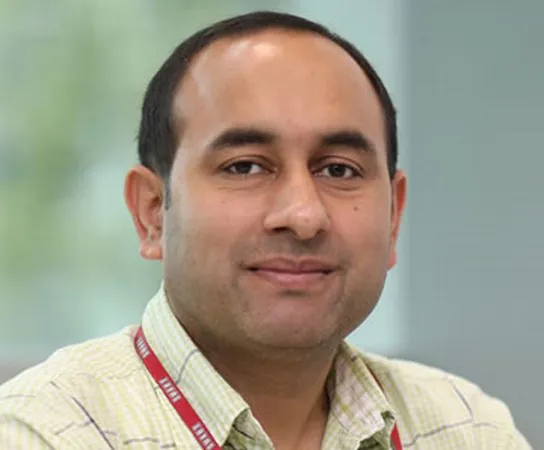“The farming industry is undergoing a digital revolution. Thanks to the large-scale availability of sensors, cameras and other mobile and computing technologies that we could only dream of in the past, growers have great amounts of data at their disposal,” says Dr. Gajendra Pratap Singh.
Cause of the revolution
In his view, there are three main components that are causing the digital revolution in agriculture. Firstly, there is the availability of affordable and portable sensors, that enable growers to monitor their crops more closely. Secondly, communication technology has allowed growers to be in closer contact with each other and with suppliers. But most of all, the massive availability of data analytics that the use of Artificial Intelligence (AI) technology allows for is helping to make smart decisions on time and increase productivity.

Gajendra Pratap Singh
Gajendra is Principal Investigator and Scientific Director at Disruptive & Sustainable Technologies for Agricultural Precision (DiSTAP) at Singapore-MIT Alliance for Research and Technology (SMART), MIT’s research enterprise.
“AI technologies allow real-time interpretation of crop health data obtained from field sensors. Sensors in irrigation systems have been designed to provide water only when no rain is forecast, just to give one example. This both saves water and improves crop yield,” Dr. Singh explains.
The wealth of useful information that new technologies provide can also be used to breed resilient crops to withstand plant diseases. “In my view, AI technologies combined with sensor and mobile communication technologies have the potential to empower farmers like never before in history. This way, the huge amounts of data obtained from plants using novel sensors can help to increase farm productivity, develop new heat-tolerant varieties of crops, and to curtail the predicted food shortage due to climate change and population increase.”
Still room for improvements
However, the industry is not there yet, Dr. Singh claims. “AI technology on its own is not powerful enough to boost agriculture. Collaboration is needed with sensor and communication technologies to render them useful. Right now, sensors only measure the morphology or appearance of the plants or environmental factors such as temperature. They don’t monitor the biochemical changes occurring inside the plants in real-time yet. But when a plant is stressed due to the lack of nutrients or proper light, it generates a wealth of biochemical information. Being able to use this information will help growers even further.”

And this is exactly what DiSTAP wants to achieve with their new, portable Raman sensors that measure data concerning nitrate stress, shade avoidance syndrome, and bacterial infections in plants within a few hours. “For that reason, we’ve developed nano-sensors that can measure plant hormones, giving vital feedback to the farmer on a daily basis. Thus, it is possible to monitor the health of each plant every day by measuring the plant itself and not the symptoms or the environment only. Also for vertical farms, it is technologies these nano-sensors combined with AI that have the potential to improve crop productivity several times.”
This is important, according to Dr. Gajendra Pratap Singh, as agriculture has a profound impact on every human being. “In Bangladesh, for example, just two days of heat in April this year destroyed more than 60,000 hectares of rice, affecting more than quarter-million farmers with losses of about US$40 million. The availability of mobile technology in the remotest parts of the world will allow universal participation of farmers in the digital revolution in agriculture.”
For more information:
Dr. Gajendra Pratap Singh, Principal Investigator and Scientific Director
Disruptive & Sustainable Technologies for Agricultural Precision (DiSTAP)
Singapore-MIT Alliance for Research and Technology (SMART), MIT’s research enterprise in Singapore
gajendra@smart.mit.edu
distap@mit.edu
www.smart.mit.edu
